#Umayyad
Explore tagged Tumblr posts
Text
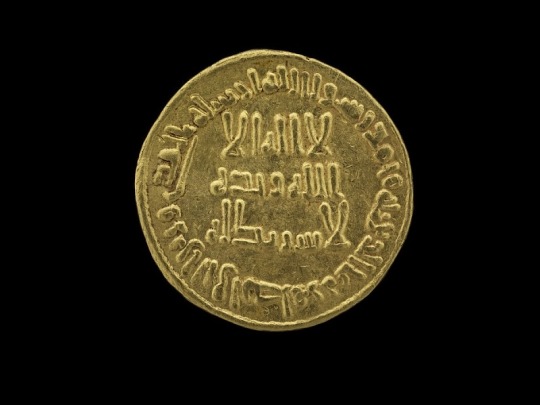
1 Dinar, Umayyad Dynasty, 713-714.
The Smithsonian Museum of American History.
#art#culture#history#middle eastern history#umayyad#umayyad caliphate#north africa#middle ages#medieval#medieval history#the smithsonian museum of american history#the smithsonian#coins
13 notes
·
View notes
Text

Interior of the Umayyad Mosque in Damascus, Syria
Syrian vintage postcard
#briefkaart#photography#vintage#syrian#tarjeta#mosque#postkaart#postal#damascus#photo#postcard#historic#carte postale#the umayyad mosque#umayyad#ephemera#interior#sepia#syria#ansichtskarte#postkarte
7 notes
·
View notes
Text
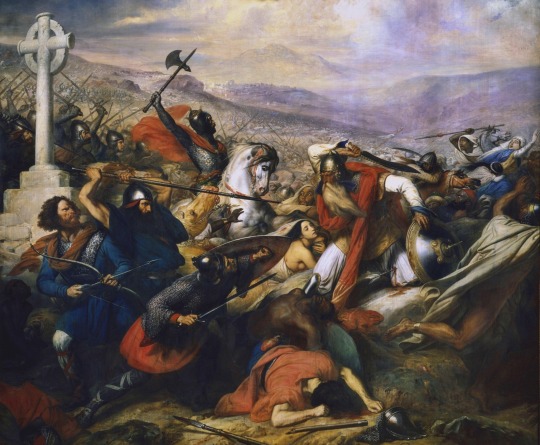
The Battle of Tours, October 732 by Charles de Steuben
#battle of tours#battle of poitiers#art#charles de steuben#umayyad#invasion#gaul#franks#frankish#charles martel#aquitainian#muslim#christian#history#europe#european#germanic#abdul rahman al ghafiqi#umayyad caliphate#france#western europe#christianity
61 notes
·
View notes
Link
This is a good (easily accessible) introductory monograph on the Umayyads, especially for those unfamiliar with Islamic history. I don’t believe I’ve posted it here before. Enjoy.
15 notes
·
View notes
Text
The Reconquista & Moorish Resistance in Spain: Rebellion of the Alpujarras (1499-1501)
1492 was one of the most consequential years for the nationhood of what is now Spain. Not only was it the year Christopher Columbus & his crew reached the Americas in the name of the Spanish monarchs. An event that ignited the subsequent centuries long European exploration & conquest of the North American & South American continents. 1492 was also the year that most historians deemed the official end of the so-called Reconquista.
The Reconquista (reconquest) was also commonly viewed as a centuries long project of entailing conflict between the Christian kingdoms of the Iberian Peninsula (modern Spain & Portugal) aimed at “retaking” the land from the Islamic invaders who hailed from North Africa & the Middle East and ruled over large swaths of land collectively known as Al-Andalus. The grouping of Muslims in Iberia came to collectively be referred to as the Moors. As we’ll elaborate in this post, the Reconquista fitting into a binary Christian European versus foreign Muslim narrative is probably too narrow to accurately the describe the period in question. Nor as we’ll discuss later does the year 1492 automatically signal an end to the Moorish community such as it was within Iberia. As with much of history there is much more nuance to these topics. To get a more accurate picture of history requires accepting that nuance however inconvenient to our preconceived notions did in fact & does in fact exist in virtually every historical event recorded across the spans of time & space.
Let’s then define the rough time period we mean, when we discuss the Reconquista. Historians commonly refer to the Reconquista to be roughly from the year 718/722 AD/CE starting with the Battle of Covadonga lasting until the Fall of Granada in 1492 AD/CE. These are generally the bookends of Reconquista which are more or less accepted by historians today. For further context, let’s remind ourselves of what brought about the Reconquista & then discuss whether that it was a simple case of Christian vs. Muslim.
The Islamic Conquest of the Iberian Peninsula is generally believed to have begun in the year 711 AD/CE when a force of Muslims made up of mostly Berber or Amazigh (native peoples from North Africa) with some Arabs crossed the Straits of Gibraltar from modern Morocco & invaded modern-day Spain. This force was led by one Tariq ibn Ziyad (670 CE-720 CE). Tariq was a Berber from North Africa whose people had only within the last few decades come to embrace Islam & not completely. The early Islamic conquests spread rapidly following the death of the Prophet Muhammad in 632 CE. Muhammad had largely succeeded in uniting the Arabian Peninsula under Islamic rule by his death. From there under the first Islamic empire of sorts, the Rashidun Caliphate (632 CE-631 CE) saw conquests of both some of the Middle East and some of North Africa, namely Egypt from the Eastern Roman Empire (Byzantine Empire) & Iranian Plateau from the Persian Sassanian Empire. Following the First Fitna (civil war), the Rashidun Caliphate was succeeded following the death of Muhammad’s cousin & son-in-law Ali ibn Abi Talib, the 4th and final caliph of the Rashidun (rightly guided). They were succeeded by the Umayyad Caliphate (661 CE-750 CE), the 2nd major Islamic caliphate. The Umayyads were an Arab dynasty & distant relatives of Muhammad taking power after the First Fitna from their power base in Syria. They changed the trajectory of Islamic history in a number of ways. In a leadership level, they became the first hereditary Islamic dynasty, making the caliph less of a religious & political leader & primarily a political leader akin to a king or emperor in practice though nominally had the religious leadership attached to the title but this would decrease in practice overtime. The succession of caliphs were now passed essentially from father to son whereas the Rashidun caliphs were elected by a council called a shura who tried to assess the merits of the candidates proposed. Leadership was intended to be based on those whose character & ability would exemplify Islamic teaching & virtue as they believed the Prophet Muhammad had exhibited in his leadership.
The Umayyads greatly expanded the Islamic conquest to the whole of North Africa by the late 7th century & all the way into parts of Central Asia & the Indus Valley in modern Pakistan & India. They also extended northward into Byzantine held Anatolia (modern Turkey) and the southern Caucasus (Armenia). They further extended their reach into Europe with raids in the Mediterranean including the Iberian Peninsula by the late 7th & early 8th centuries CE. While Islamic teachings held that all Muslims were equal in terms of value regardless of ethnic or geographic background & the Umayyads did indeed rule over a vast multiethnic & multireligious empire, in practice they maintained a preference for Arab Muslims among the bureaucracy & aristocracy to rule over the empire. A hierarchy formed with the Arabs at top, non-Arab Muslims such as Persians, Egyptians, Greeks, Armenians & Berbers who recently converted as generally beneath the Arabs & below them Christians & Jews who did not convert to Islam along with other non-Abrahamic religions at the bottom of the hierarchy. Christians & Jews however were allowed to practice their religion without interference so long as the jiyza poll tax was paid to fund the caliphate’s operations in part.
It was under the Umayyad Governor of Ifriqiya “Africa” (modern Tunisia, Algeria & Libya) Musa ibn Nusayr, an Arab from Syria that Tariq ibn Ziyad was ordered to cross the Straits of Gibraltar & invade Iberia. At the time Iberia was under the control of the Kingdom of the Visigoths. The Visigoths were a Germanic people from Northern & Eastern Europe that moved nomadically into the Roman Empire during the late classical period into the early medieval period. They were among the so-called barbarian hordes that overran the western Roman Empire & had famously sacked Rome itself in 410 AD/CE. This contributed to the eventual downfall of the Western half of the Roman Empire. The Visigoths in time however along with other Germanic peoples like the Ostrogoths, Vandals & Franks began to adopt elements of Roman culture from the areas over which they now ruled. Picking up Latin as an official language & even adopting Christianity. The Visigoths had helped the Romans at one point fend off Attila the Hun and his nomadic empire in the plains of France. The Visigoths had settled in southern France before crossing into Spain where they overtook the Hispano-Roman population. The Hispano-Romans were a mixture of native Iberians, Celts, Carthaginian & Greco-Roman settlers among others in Iberia who more or less coalesced into a common people that spoke Latin & practiced a precursor to Catholic Christianity. Iberia likewise contained the native Basque peoples who maintained their own unique language & culture to this day, largely protected by their residence in the mountainous northern reaches of Iberia & southern France. The Visigoths ruled over them as powerful warrior minority who overtime increasingly assimilated into Hispano-Roman majority but still maintained serious differences. The brand of Christianity practiced by the Visigoths was known as Arianism & differed from the Christianity of Hispano-Romans. They also dealt with somewhat unsettled monarchical rules. Civil war occurred among the Visigoths for kingship which was not necessarily hereditary.
It is said that the rule of a Visigoth King by the name of Roderic who reigned from 710-711 was the impetus for the Muslim invasion. There is much debate about whether Roderic’s reign itself was the cause for the invasion as there is a fabled tale that he seduced or raped the daughter of one of his nobles who turned to the Muslims of the Umayyad Caliphate to act as a mercenary force to avenge & depose Roderic in exchange for conquest of the peninsula. This tale was sometimes accepted as fact but may actually be a tale or contain some elements of truth, the historical record to this day is limited on this. However, what seems to be known is that Roderic’s reign was not fully accepted by other Visigoth nobles within the kingdom & was disputed at best & perhaps ignited civil war or at least created a division that may have led to conspiracy between Visigoth nobles & Umayyads. Whatever the reality, the opposition to Roderic did create an opportune moment for an army of Berber and Arab Muslims (Moors) to land at the Rock of Gibraltar & begin their in-land push to begin conquering the Iberian Peninsula also known as Hispania. Gibraltar in fact takes its name from Tariq ibn Ziyad’s first name. In Arabic the rock which is the symbol of the modern British possession Gibraltar was known as Jabel-al-Tariq (Rock of Tariq), in antiquity it was known as one of the Pillars of Hercules. Roderic raised an army to oppose the Muslims and was defeated it is said due to betrayal of his own forces at Battle of Guadalete. This is turn opened a rapid conquest of virtually all of the peninsula within a decade. The Muslims received more Berber & Arab reinforcements and were more or less accepted by some of the Visigoths & Hispano-Roman population. The Umayyads had added the regions known in Arabic as Al-Andalus or land of the Vandals (Germanic peoples who reigned in Iberia earlier) as their western most province.
For virtually a decade their conquest went unimpeded due to the divisions among the Visigoths & the Hispano-Romans. However, the northern mountains of Hispania did protect some retreating Visigoth & Hispano-Roman Christians as it did their Basque neighbors. Creating a relative safe haven for them in the form of a new kingdom, the Kingdom of Asturias. Additionally, the Muslims had to now consolidate their hold over southern & central Iberia as well as the coasts. Further strains to the Islamic cause came in the form of division between Arab & Berber. The Arabs typically were new to North Africa much less Europe & due to Umayyad preferences were often given leadership positions & the greater spoils of war over the more numerous Berbers who acted as the rank & file soldier typically, leading to lingering resentment. These divisions would persist off and on throughout the history of Al-Andalus, notably in the Great Berber Revolt of 740-43. The Battle of Covadonga fought in either 718 or 722 CE saw the Asturians defeat the Umayyads for the first discernable time & allowed a check on their ambition to completely rule the peninsula. Other setbacks to Muslim conquests came in their invasions of France where in 721 they were defeated in the Siege of Toulouse & in 732 the Franks decisively defeated the Muslims at the Battle of Tours.
In 750 CE, the Umayyads were overthrown by a new Arab dynasty with closer blood ties to the Prophet Muhammad, the Abbasid dynasty. The Abbasid Caliphate (750-1258 & 1261-1517) were descended from the Prophet’s uncle & while they maintained the Umayyad preference for hereditary succession to the caliphate, they reversed the Umayyad preference for an Arab only bureaucracy, largely using Persians to fill government roles & allowing other non-Arabs likewise to fulfill leadership roles. The Abbasids would likewise preside over an age of cultural flowering within the Islamic world, the so-called Islamic Golden Age with the establishment of Baghdad in Iraq as their capital. They’d rule over the largest Islamic empire in history but one not entirely united as they would soon lose Al-Andalus.
The Abbasids would try to kill every remaining Umayyad but one named Abd Al-Rahman Al-Dahkil (the Entrant) managed to escape Syria while witnessing his brother’s execution. Abd Al-Rahman’s father was Arab but his mother was Berber & he sought refuge among his mother’s relatives in North Africa which had become relatively autonomous under the Umayyads due to the rule of another Arab noble dynasty known as the Fihrids. They accepted Abd Al-Rahman’s exile within their borders as they themselves were not eager to accept Abbasid rule & did so nominally. The Fihrids had spearheaded the Arab conquest of North Africa & now ruled as governors of Al-Andalus well into the 8th century but divisions amongst the Yemeni & Syrian Arab factions and Berber factions created an opportune moment for Abd Al-Rahman to make his way into Iberia. There with an army of Syrian Arabs & Berbers he defeated the Fihrid governor of Al-Andalus. In turn he now created an independent Emirate (Principality), the Emirate of Cordoba (756 CE-929CE) which later evolved into the independent and rival Caliphate of Cordoba (929 CE-1031 CE). The Umayyad direct rule over Cordoba likewise saw a cultural flowering which rivalled that of the Abbasids in Baghdad. With geography & other more pressing issues closer at home, the Abbasids de-facto accepted the Umayyad reign over Al-Andalus. This peaked under the reign of Abd Al-Rahman III who reigned as Emir from 912-929 before declaring himself as Caliph of Cordoba and ruling as caliph from 929 to 961. Cordoba became a major center of learning in Western Europe & both as an emirate & caliphate saw much knowledge transfer between Muslim, Christian & Jews. These people could live side by side but by the 10th & 11th centuries CE, the majority population of the Iberian Peninsula was in fact majority Muslim. This populace became collectively known as the Moors to the Chrisitan European world.
What constituted the term Moor? It is derived from the term Mauri originally derived from the Greek term for the Berber tribes of northern Morocco & Algeria, that term was Maurusii or Mauri as it was adopted in Latin later by the Romans after their conquest of North Africa. It also applied to the Latin name for the province of Mauretania. Originally it applied to the Berber peoples of this region, but this preceded the Islamic era by centuries & had no religious connotations. By the time of Al-Andalus, Mauri remained the Latin term for the Berbers but the Muslims were never strictly only Berbers but a combination of Berber & Arabs. The term Moor in English is in turn derived from the Latin daughter Romance languages of Spanish, Italian & French which used the term moro & maure. By the time of Al-Andalus as the Caliphate of Cordoba, Moor was applied to all Muslims within the Iberian Peninsula. This applied equally to Berbers, Arabs & European converts to Islam, the Hispano-Romans & Visigoths also to some degree converted to Islam, as did slaves imported from Eastern Europe via the Arab slave trade. These latter two groups (Hispano-Romans & the Slavic slaves) helped constitute the majority of Iberia’s previously Christian population & it was through this conversion that Islam became the predominant religion of Iberia during much of the Middle Ages. They were known as muwallad.
Moors never truly constituted a specific ethnicity in Spain & Portugal. It was perhaps better described as a cultural or religious designation rather than an ethnic or racial one. Moors came from various ethnic backgrounds spanning 3 continents (Europe, West Asia & North Africa) and could range in skin color from dark to light & fair skinned as it was not a racial designation. Furthermore, the racial divides between Berber & Arabs during the earlier Al-Andalus period began to dissipate gradually over the centuries due to intermarriage between the two communities & this also included muwallad (Hispano-Roman) marriage with Berber & Arab communities as well. In time leading to a community that became better known as Andalusian (taken from Al-Andalus) or to the Christians as Moors.
As the Islamic power changed overtime from emirate to caliphate likewise new Christian kingdoms arose from the north of Iberia. Asturias gave way to the Kingdom of Leon & the Basques formed the Kingdom of Pamplona. In time the kingdoms of Castile & Aragon formed & Pamplona turned into the kingdom of Navarre. As the Reconquista progressed the political interplay between Christian & Muslim powers became complex & despite the common narrative of a strict Christian vs. Muslim conflict much like the Crusades of the Middle East from the late 11th century onward, a more nuanced reality existed. The caliphs of Cordoba were in fact mostly European being only patrilineal descendants of the Arab Umayyads. Their mothers were made up of generations of either European slaves taken in raids or in some cases the Basque & Hispano-Roman royalty of the northern kingdoms who made treaties with the Umayyads & sometimes sent their daughters or sisters to become wives of the emirs & caliphs so as to ensure peace between their respective kingdom. Abd Al-Rahman III, Caliph of Cordoba was the grandson of a princess from Pamplona & great-grandson of the Basque king of Pamplona. He was said to have had fair skin & light eyes & hair/beard which he dyed black to make it appear more “Arab” despite that three-quarters of his grandparents were completely European, the remaining quarter was partially Arab intermixed with European captives in the emir’s harem. Subsequently his cousins constituted the fellow monarchs of northern Iberia he had to contend with both through war & diplomacy.
Throughout the Reconquista era, interaction between Christian & Muslim occurred at all levels in Iberia. Trade, commerce, art, education & cultural exchange was not uncommon in addition to the familial ties of politicians & the ever-shifting alliances. Christian powers were in competition with each other & Al-Andalus, matters complicated further following the collapse of the Caliphate of Cordoba which saw the break apart into numerous Muslim petty kingdoms called taifas. Some ruled by Arab, Berber or muwallad dynasties. Some paired with Christian powers against rival Muslim powers & likewise Christian powers teamed with Muslim powers against fellow Christian powers but the fractured nature of the taifas gave opportunity for Christian kingdoms like Castile & Aragon to gradually take more territory. This was encouraged by the papacy in Rome and other players in Western Europe which sometimes saw French, English and other European mercenaries serve in the Iberian Christian armies against the Muslims. So, it’s not inaccurate to say the Reconquista contained elements of a Christian vs. Muslim narrative & indeed it was a goal of many if not all Christian rulers in Iberia to drive the Muslims ultimately out of Iberia & unite the lands under their own rule, but their ambitions also extended to leadership over their fellow Christians too. The question was would achieve this.
Before this could happen, intervention from Morocco took place with a Berber led religious movement/dynasty known as the Almoravids intervened in Iberia & defeated a Castilian & Aragonese combined force at the Battle of Sagrajas in 1086. They had been invited by the taifa rulers of Al-Andalus who realizing their own power slipping due to their infighting & subsequent losses to the Christian north needed a united front against complete collapse. The Almoravids indeed halted the Reconquista but in the 12th century as home in Morocco they were supplanted by yet another Berber religious movement & dynasty, the Almohads. The Almohads not only took over Morocco but much of North Africa & eventually Al-Andalus. Likewise, they had to compete with Christian powers and the remaining taifas of Iberia more or less determined to maintain some autonomy.
However, the tide seemed to forever turn in the Christian favor following the 1212 CE Battle of Las Navas de Tolosa in which a Christian coalition of Castile, Aragon, Navarre and a host of Crusader military orders & mercenaries from throughout Western Europe defeated the Almohads decisively. This subsequently saw the Almohads eventually collapse in Iberia while they likewise power to various dynasties in North Africa spanning from Morocco to Libya. The third taifa period in Iberia came after the Almohad collapse. This likewise saw the taifas being subsumed by the Christian kingdoms. The one relatively strong Muslim power to remain in Iberia was a relatively new one which became the Emirate of Granada (1230 CE-1492 CE).
Granada had the Sierra Nevada mountains to offer it a modicum of defense from the Christian north & its ruling dynasty, the Nasrids were of Arab stock. The Nasrids two lasting contributions would be in architecture & historical placement. Their architecture was best exemplified in the form of the world famous Alhambra palace complex. Which served as a fort & series of palaces built on a hill overlooking Granada that saw expansion over the coming centuries. The Nasrids unfortunately for the Muslims of Iberia were known in history as the rulers of the last independent Muslim realm in Western Europe. As time went on they became vassals of the Kingdom of Castile, the most powerful & leading Christian realm in Iberia. They alternated between war & peace with Castile, inflicting defeat & suffering defeat to the Castilians a gradual loss of territory to the Christians became irreversible & more and more the Muslims of Iberia of Berber, Arab & muwallad background rallied around their religious & cultural identity, becoming more culturally & geographically Andalusian as ethnic identifiers continued to wane in importance. Granada’s ever shrinking borders became the last safe haven for the free practice of Islam in Iberia, something that had lasted for nearly 800 years.
1491-1492 would see the Emirate of Granada come to end, along with it a successful completion of Reconquista and the end of Muslim rule in Iberia for all time up to the present. The Catholic Monarchs, Isabella I of Castile & her husband Ferdinand II of Aragon created a personal union between the two most powerful kingdoms in all Iberia. Their marriage also saw a renewed joint focus on ending Granada with the idea of removing the last Muslim power in the peninsula. Starting in 1482 Castile & Aragon fought a decade long war with Granada but it was the siege of Granada itself in 1491 that caused Muhammad XII, the Nasrid emir of Granada to surrender the city, the whole of the emirate & the Alhambra palace built by his ancestors to Isabella & Ferdinand. Christian success came when the besieging forces bombarded the city with early gunpowder artillery & cutoff the water supply & demoralized the Muslim defenders. Additionally, there was rampant bribery going on between both sides which added an air of confusion & distrust between peoples within & outside of Granada. Finally, the terms offered by the Catholic Monarchs to Muhammad XII caused him to capitulate as they were deemed generous to the Muslims of Granada & this was preferable to complete death & destruction.
The Treaty of Granada signed in November 1491 gave a truce that stated on January 2nd,1492 the city would be handed over to the Christians effectively ending the Reconquista. The treaty had many articles but largely can be summed as saying the Muslims of Granada in exchange for their submission to Isabella & Ferdinand would be able to essentially keep their property & maintain their free practice of religion & custom with little or no interference.
While this officially ended the Reconquista, it also helped give birth to the modern nation of Spain as Spanish nationhood became a more discussed notion following the fall of Granada. The Alhambra was eventually converted into a Christian palace, particularly under Isabella & Ferdinand’s grandson’s (Charles V, Holy Roman Emperor) reign.
Initially, these generous terms afforded to the Muslims of Granada from their new sovereigns was adhered to but for both Jews & Muslims in Spain, the subsequent Spanish Inquisition by the Catholic Church would lead to massive disruptions. However, their remained a difference of opinion between the church and the monarchs. Church officials wanted the state to apply pressure to the Muslims & Jews of the kingdom with an eye towards conversion en masse. Meanwhile, the king & queen sought to uphold the terms & let the Muslims passively convert to Christianity if possible. In 1499, during their visit to Granada the population (many Muslim) actually cheered the crown for nearly a decade of respectfully adhering to the provisions of the treaty in 1491.
This rapidly changed that same year when the Archbishop of Toledo moved to Granada & begin asking for the imprisonment of Muslims including the nobles. Once in prison they faced torture until conversion. Spurred on by this the Archbishop begin to increase the pressure by having a loophole in the trearty allow for the questioning of Christians who had become Muslim converts & done so in front of Muslim clerics. These converts were summoned to prison for questioning & often women were targeted which angered their Muslim male relatives. This reached a breaking point when one convert woman openly decried she was being forced to convert to Christianity, the officials escorting her to prison were surrounded by a Muslim crowd, one was killed while the other escaped & this in turn triggered an open revolt.
The archbishop demanded the Muslims hand over the killers of his agent which failed. Instead, he called up soldiers to help provide a show of force if necessary to put down the revolt. After negotiation the killers were turned over the rebellion died down due Muslims handing over their weapons. Nonetheless the archbishop was recalled to Seville by Ferdinand who was angered. The archbishop nevertheless convinced him that Muslims broke the treaty through their open revolt. Furthermore, he managed to get the Catholic Monarchs to pardon all rebels in exchange for their conversion to Christianity. This conversion was nominal for the whole Muslim populace of Granada.
While Granada’s Muslims calmed their own rebellion down through negotiation, the rebel attitude spilled over to the countryside. Particularly into the Alpujarras mountain range south of Granada. There the Andalusian Muslims were living fairly free lives devoid of much interference & enforcement of the treaty. Fearing the forced conversions that befell Granada, they declared the revolt in the name of preserving their religion & culture. Due to the mountainous terrain & well led tacticians, they were able muster up a guerrilla warfare campaign against Christian rule. However, the Christians were able to send roughly 80,000 soldiers into the region to put down the rebellion eventually with Ferdinand overseeing the war efforts. The Muslim guerillas lacked an organized structure of command & overall strategy & this in turn allowed the Christian forces to defeat the rebels piecemeal. Rebel lives could be spared on the condition of conversion to Christianity. Furthermore, the Christian forces now took to preserving little to no quarter to the enemy. In the town of Laujar de Andarax 3,000 Muslims were killed included hundreds of women & children blown up in a mosque in which they sought refuge due to ignited gunpowder supplied to besiege the town. By early 1501, Ferdinand declared the rebellion over. The Muslims continued to rebel & they were met with both defeat & victory but realizing they could not have a great chance at winning the war without a defined command & strategy, they sued for peace. Ferdinand likewise felt the peace was needed since his army couldn’t sustain the logistical challenges of a long-drawn-out guerilla war in the mountains.
The terms of Ferdinand’s accepting the Muslim’s surrender was no longer the generous terms of 1491 a decade before. The rebels must convert through baptism, reject baptism & face death or enslavement or finally choose exile outside of Iberia. The cost of exile was to be self-funded too & for many, it was far too expensive & extortionate for the average Andalusian Muslim. This left few any decision but to remain & nominally convert. All Muslims in Granada were in name Christian if in practice they continued to defy the laws they now were forced to follow. Many continued to practice Islamic customs in secret, but they were able to maintain their Islamic dress & some would still speak Arabic & maintain other customs. The enforcement by the Christian authorities was stricter than before the rebellion but it was not always feasible, especially in the mountainous Alpujarras. They publicly professed to be Christians but were determined in many cases to remain Muslim despite the threat of death which hung over them. These lingering tensions & suspicions by the subsequent Spanish monarchs & the church led to increased scrutiny & enforcement in the form of dress codes, inquisitions into the sincerity of their conversion & harsh punishment for those found to violate the new royal proclamations. By now, the Muslims in Iberia were referred to as Moriscos in Spanish, which translates as “little Moors” & applied to these Spanish Muslims who now professed to be Christian through conversion but still secretly practiced Islam & maintained Islamic traditions in private. For the Moriscos, the tension between state & mosque was eventually going to be too much to withstand. Events would boil over into a second and even larger rebellion later in the 16th century one which would determine the fate of Iberian Moors for centuries to come...
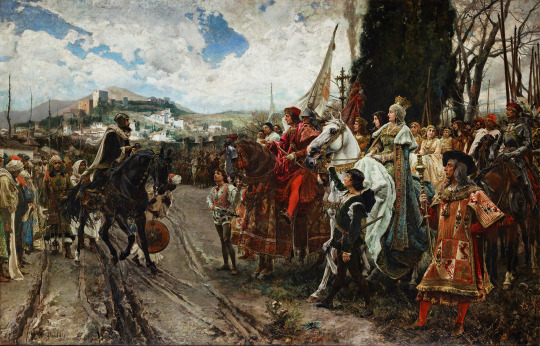
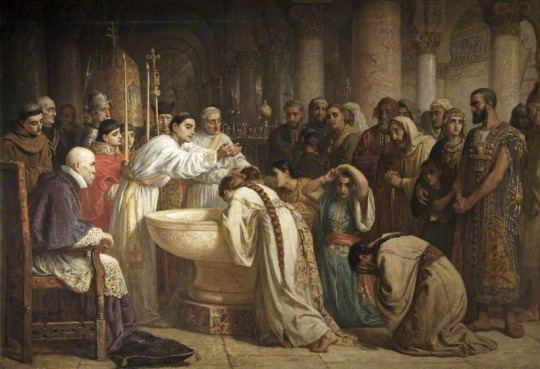
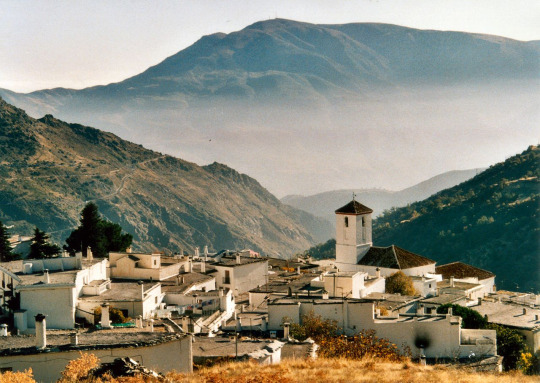
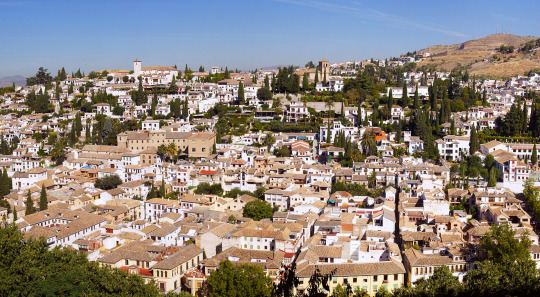
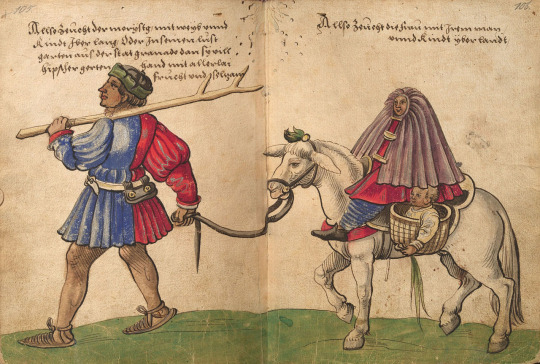
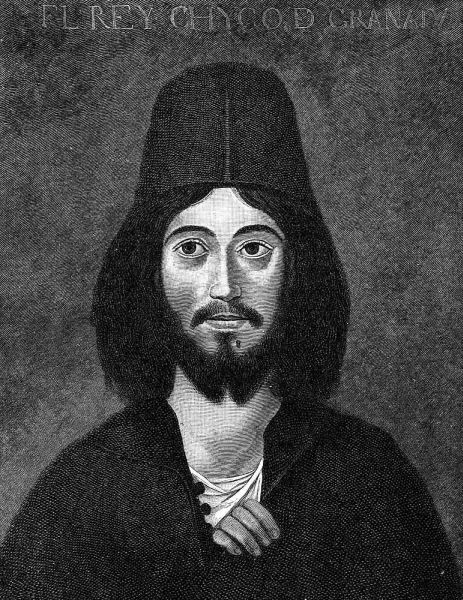
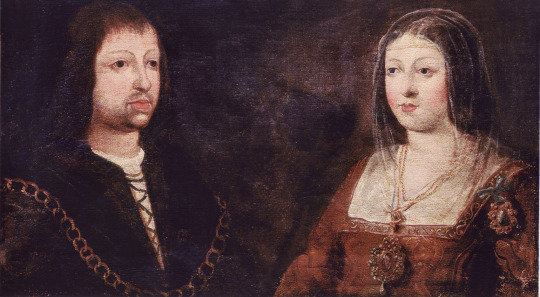
#Moors#morisco#spain#islamic history#islam#spanish inquisition#castile#aragon#portugal#navarre#granada#Emirate of Granada#cordoba#umayyad#Al andalus#military history#alpujarras#Guerilla Warfare#Middle Ages#reconquista#caliphate of cordoba#abbasid#catholic monarchs#ferdinand ii#isabella i of castile#1492#christopher columbus#morocco
5 notes
·
View notes
Text
On this day (26 December, 1489 CE {22/23 Muharram, 895 AH}), the Andalusian city of Almería fell to the joint monarchy of Castile and Aragon that would later become Spain.
The city was founded by the famous Umayyad Emir of Córdoba and later the first Umayyad Caliph of Córdoba, Abdur-Rahman III, in the year 955 CE.
Its Muslim population was almost entirely composed of indigenous (Iberian) converts to Islam, who were later joined by southern Arabian (Yemeni) tribes who settled in the region.
Pictured is the Alcazaba of Almería (Alcazaba de Almería/Citadel of Almería) which was founded by the aforementioned Abdur-Rahman III, and which gave this city its name: "al-Mariyyah" or "the Watchtower".
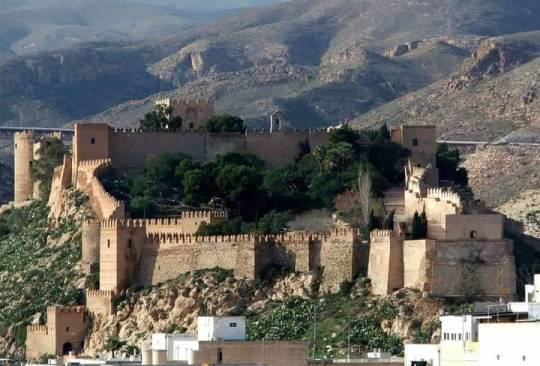
#islam#muslim#history#islamic history#history blog#umayyad#spaintravel#spain#almeria#almería#al andalus#andalusia#andalus
6 notes
·
View notes
Photo

How many years it took the Umayyads and Rashidun Caliphates to fully conquer each region corresponding with today's borders
148 notes
·
View notes
Text
love when im a truther about something and everyone comes out of the woodwork to agree with me. does anyone wanna talk about early islamic history. i sound crazy when i talk about early islamic history
#THE UMAYYAD CALIPHATE GENUINELY DESTROYED A HUGE NUMBER OF SOURCES#PRE-ISLAMIC ARABIA WAS JUDEOCHRISTIAN RAHTER THAN PAGAN
147 notes
·
View notes
Text
rome: [dies]
visigoths, rizzlessly: hello little boy i guess i'm your dad now
baby antoninus: who the hell are you i want my papa
antonio, several centuries later: MY FATHER, EL BISIGODO, WAS THE MOST VALIANT OF CHRISTIAN KNIGHTS,
#hws rome#hws spain#hws visigoths#visigoths/athaulf is my friends oc he's very lame and very tired#when umayyads rolled up in the 700s like YEAH TIME TO CONQUER GOD IS WITH ME visi was like oh thank god. just let me die.
7 notes
·
View notes
Text

Gate of the Great Umayyad Mosque, Damascus
Gustav Bauernfeind. 1890
Oil painting.
#histort#vintage#1890#painting#oil painting#umayyad mosque#damascus#Gustav Bauernfeind#david tennant#baftas#bafta 2024#eurovision#c4news#bethlehem#ethnic cleansing#doctor who
19 notes
·
View notes
Text

Tiraz Fragment of Caliph Marwan II.
Umayyad Empire. Tunisia. 7th-8th Century CE.
Brooklyn Museum
#art#culture#history#middle eastern history#north africa#umayyad caliphate#umayyad#medieval#medieval history#middle ages#brooklyn museum#Marwan II
2 notes
·
View notes
Text

The Umayyad Mosque in Damascus, Syria
French vintage postcard
#vintage#tarjeta#briefkaart#postcard#damascus#photography#postal#syria#carte postale#sepia#ephemera#historic#mosque#french#ansichtskarte#postkarte#umayyad#the umayyad mosque#postkaart#photo
7 notes
·
View notes
Text
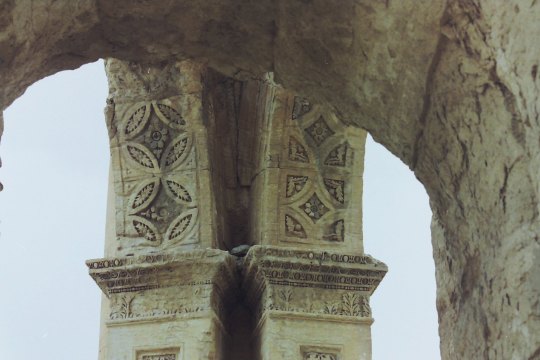
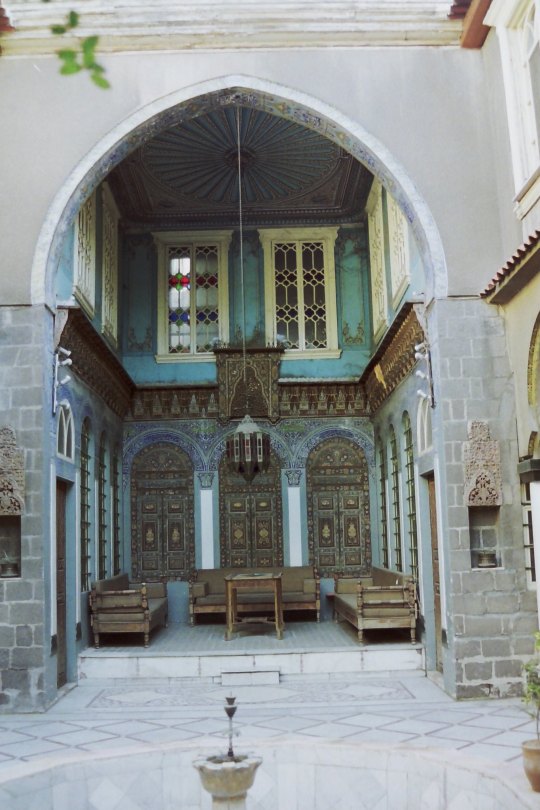
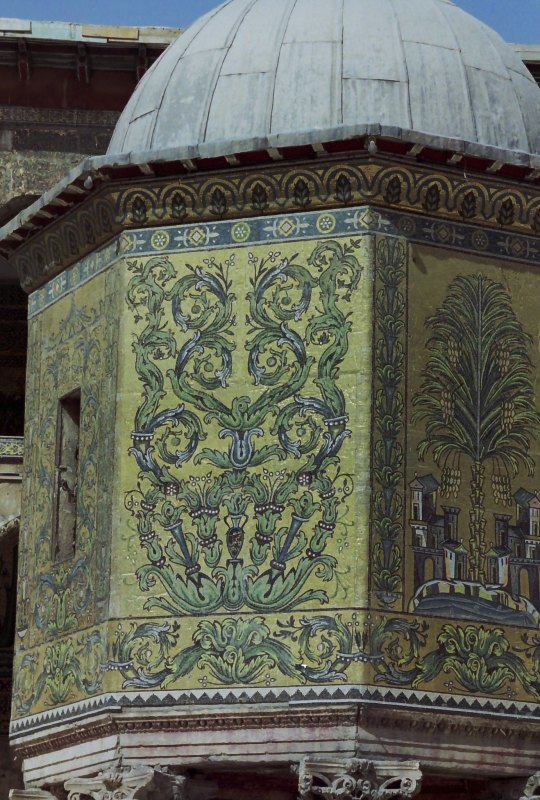
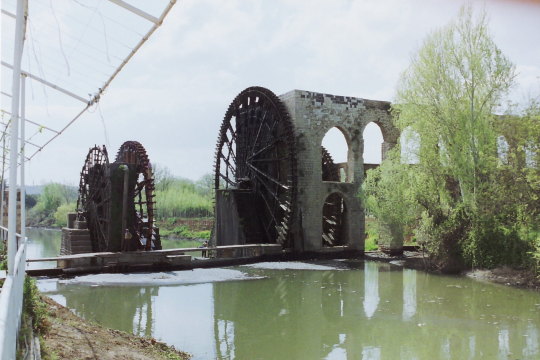
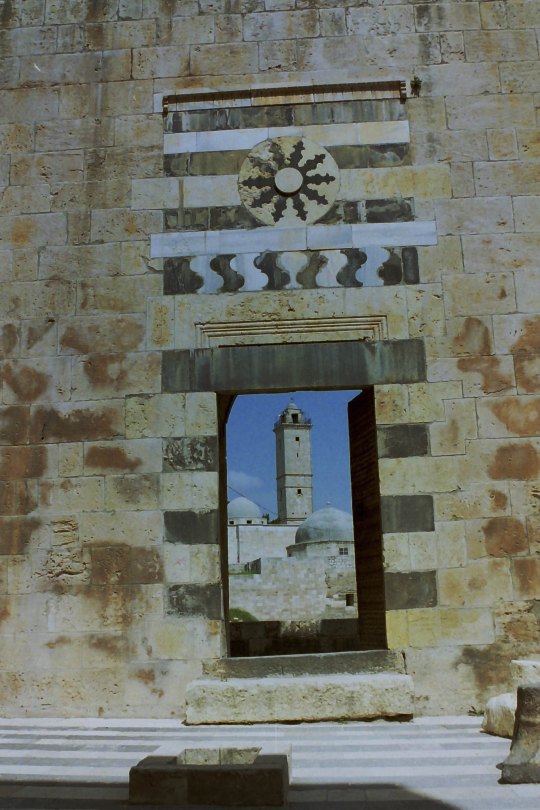
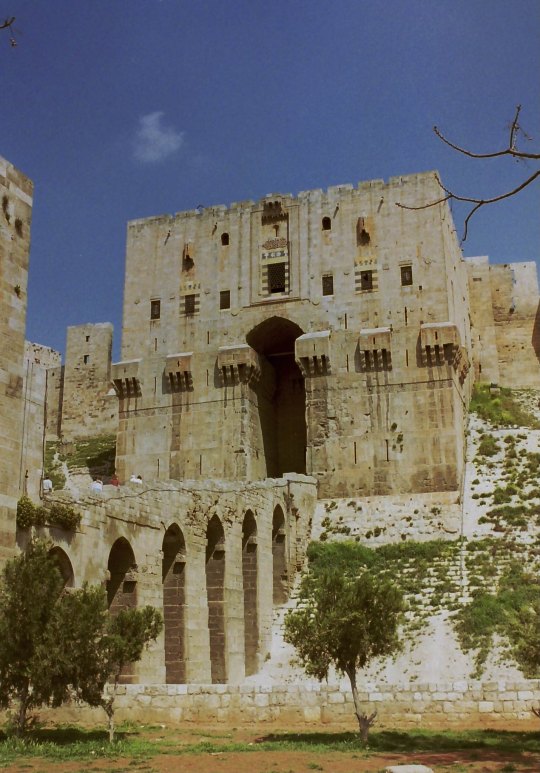
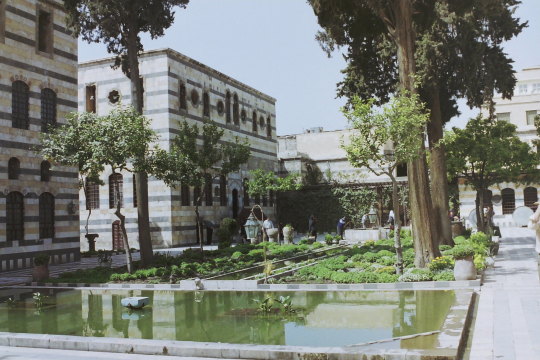
Syria, 1993. (2) (3) (4) (5) (6) (7) by jpotto
Via Flickr:
(1) Palmyra. (2) Secluded square off Straight street, Damascus. (3) Ommayed mosque, Damascus. (4) Hama, waterwheels. (5) View from the Citadel. (6) Citadel, Aleppo. (7) Al Azem palace garden, Damascus.
#ruins#stone carvings#chairs waiting#umayyad architecture#historic buildings#garden#1990s#syria#damascus#aleppo#mosque
36 notes
·
View notes
Text
Al-Khadir b. Tamim charged (Nasr’s men) wearing a coat of mail, and they shot arrows at him. Then Hubaysha, a mawla of Nasr, dashed at him, and wounded him in the throat. Al-Khadir tore the spearhead from his throat with his left hand and his horse set off with him. He charged Hubaysh, speared him, and threw him off his horse, and al-Kirmani’s foot-soldiers finished him off with clubs.
Al-Khadir encountered Salm b. Ahwaz, took a mace from his nephew and clubbed Salam and wrested him off his horse. Two men of Tamim charged Salm, but he got away, and threw himself from the bridge. He had sustained some ten blows in his iron helmet, and he collapsed. Muhammad b. al-Haddad carried him to Nasr’s camp, and the forces withdrew.
[a few days later] Al-Khadir b. Tamim attacked Salm b. Ahwaz and speared him, but he deflected the blow. Then al-Khadir struck him on the chest with an iron bar, and again on his shoulder. He struck him a third time on his head and Salm fell down.
Salm was then saved by Nasr and more horsemen it seems.
0 notes
Text
Fifth part of the bookscans of Al Andalus. Historical Figures, here's the previous part
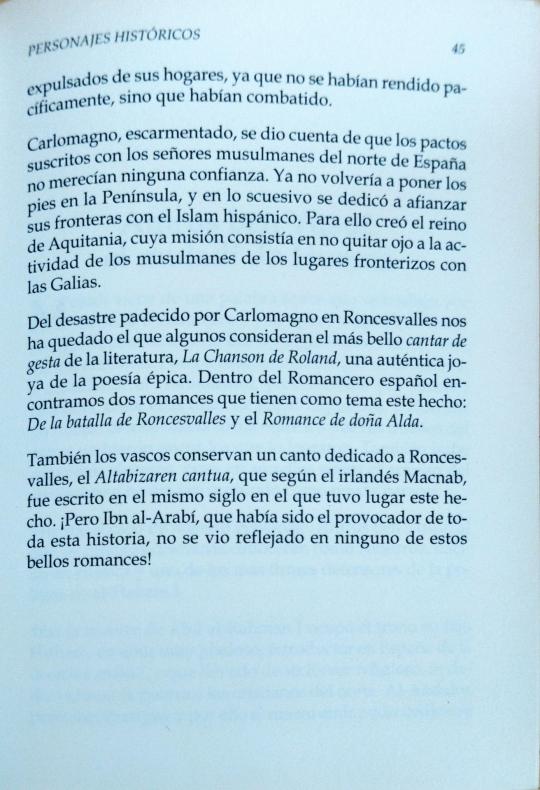
expelled from their homes, since they had not surrendered peacefully, but had fought.
Charlemagne, chastened, realized that the pacts signed with the Muslim lords of northern Spain deserved no trust. He would never set foot on the Peninsula again, and subsequently dedicated itself to strengthening its borders with Hispanic Islam. For this he created the kingdom of Aquitaine, whose mission consisted of not taking our eyes off the activity of the Muslims of the places bordering Gaul.
From the disaster suffered by Charlemagne in Roncesvalles we have remains what some consider the most beautiful song of deeds of literature, La Chanson de Roland, an authentic gem of the epic poetry. Within the Spanish Ballads we find two romances that have this fact as their theme: Of the battle of Roncesvalles and the Romance of Doña Alda. The Basques also preserve a song dedicated to Roncesvalles, the Altabizaren cantua, which according to the Irishman Macnab, was written in the same century in which this event took place. But Ibn al-Arabí, who had been the originator of this whole story, was not reflected in any of these beautiful romances!
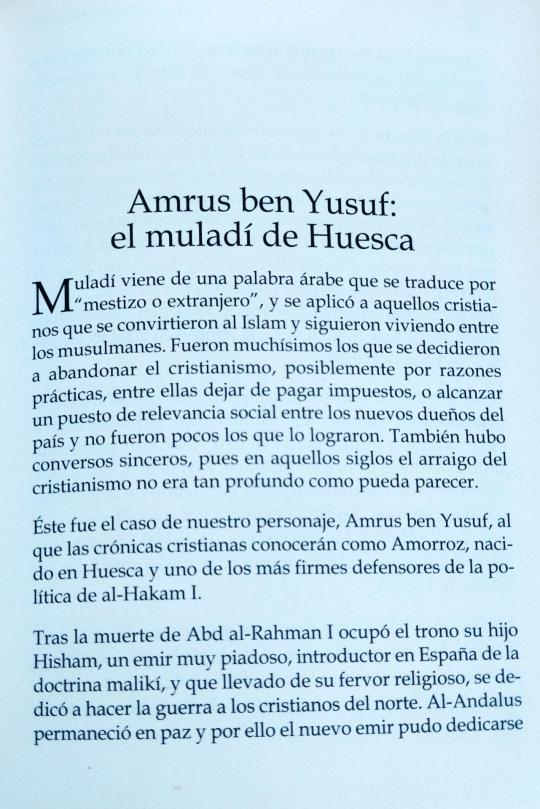
Amrus ben Yusuf: the muladí of Huesca
Muladí comes from an Arabic word that translates as "mixed race or foreigner", and was applied to those Christians who converted to Islam and continued living among the Muslims. There were many who decided to abandon Christianity, possibly for practical reasons, including stopping paying taxes, or reaching a position of social relevance among the new owners of the country and there were not a few who achieved it. There was also sincere converts, since in those centuries the roots of the Christianity was not as deep as it may seem.
This was the case of our character, Amrus ben Yusuf, whom the Christian chronicles will know him as Amorroz, born in Huesca and one of the staunchest defenders of the policies of al-Hakam I. After the death of Abd al-Rahman I, his son Hisham, a very pious emir, introducer of the Maliki doctrine in Spain, and who Driven by his religious fervor, he dedicated himself to waging war on the Northern Christians. Al-Andalus remained at peace and therefore the new emir was able to dedicate himself
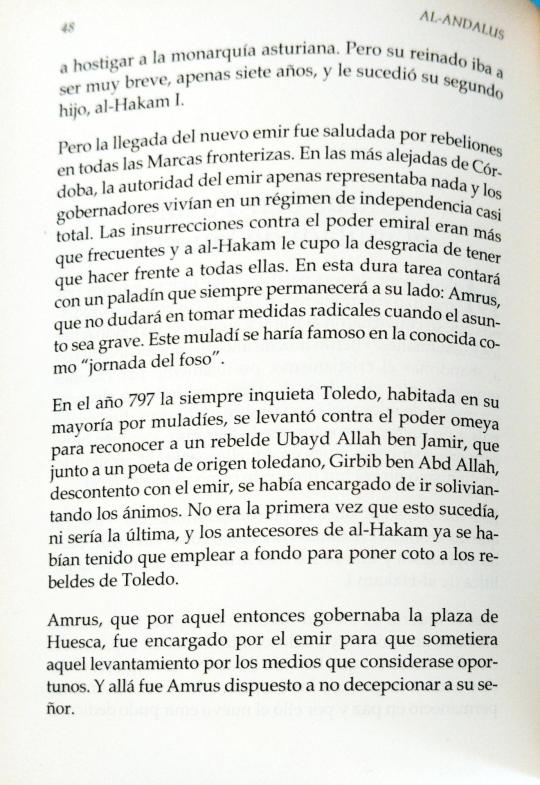
to harass the Asturian monarchy. But his reign was to be very short, just seven years, and was succeeded by his second son, al-Hakam I.
But the arrival of the new emir was greeted with rebellions in all the border marches. In the most remote areas of Córdoba, the authority of the emir hardly represented anything and the governors lived in a regime of almost total independence. The insurrections against the power of the emirate were more than frequent and al-Hakam had the unfortunate luck to have to face them all. In this hard task, he will have a paladin who will always be at his side: Amrus, who will not hesitate to take radical measures when the matter is serious. This muladí would become famous on what was known as the “day of the pit.”
In the year 797, the always restless Toledo, inhabited mostly by muladíes, rose up against the Umayyad power to recognize a rebel Ubayd Allah ben Jamir, who together with a poet of Toledo, Girbib ben Abd Allah, dissatisfied with the emir, had in charge of calming down the spirits. It wasn't the first time this happen, nor would it be the last, and al-Hakam's predecessors had already had to work hard to put a stop to the rebels of Toledo.
Amrus, who at that time ruled the stronghold of Huesca, was commissioned by the emir to subdue that uprising by the means that it considers opportune. And there went Amrus willing not to disappoint his lord.
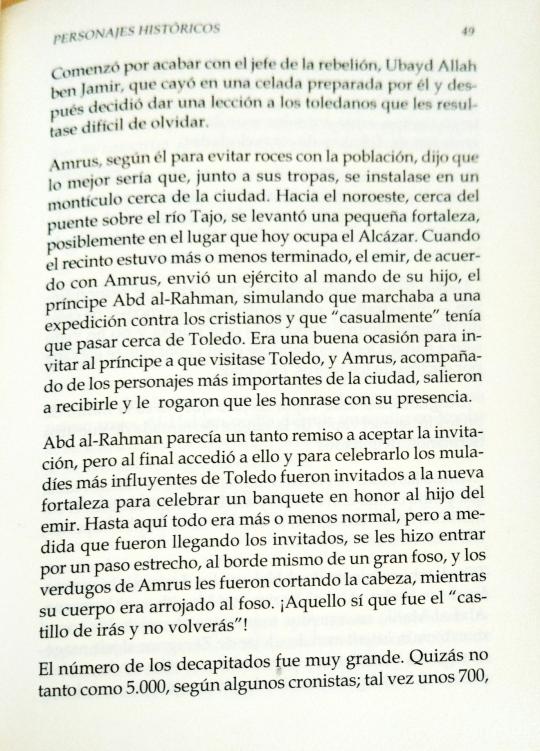
He began by eliminating the leader of the rebellion, Ubayd Allah ben Jamir, who fell into a trap prepared by him and then decided to give a lesson to the people of Toledo that they would find difficult to forget.
Amrus, according to him to avoid friction with the population, said that the best would be that, along with his troops, he would settle on a mound near the city. Towards the northwest, near the bridge over the Tagus River, rose a small fortress, possibly on the site now occupied by the Alcazar. When the enclosure was more or less finished, the emir, in agreement with Amrus, he sent an army under the command of his son, the prince Abd al-Rahman, pretending that he was going on an expedition against the Christians and that "coincidentally" had to pass near Toledo. It was a good occasion to invite the prince to visit Toledo, and Amrus, accompanied by the most important people of the city, they came out to receive him and begged him to honor them with his presence.
Abd al-Rahman seemed somewhat reluctant to accept the invitation, but In the end he agreed to it and to celebrate it the most influential mula-díes of Toledo were invited to the new fortress to celebrate a banquet in honor of the emir's son. Until then everything was more or less normal, but as the guests arrived, they became enter through a narrow passage, at the very edge of a large ditch, and the Amrus's executioners cut off their heads, while their bodies was thrown into the pit. That was the " castle of you will go and no you will come back"!
The number of those beheaded was very large. Maybe not as much as 5,000, according to some chroniclers; maybe about 700

being a very high number. What the leading class of Toledo was thus beheaded and the terrible impression produced by this event remained, for a long time, both among the Muslims and among the muladies of Toledo and from other cities.
Dozy narrates that terrible day like this: "At daybreak, a doctor that had not seen anyone leave through either of the two door, became suspicious and asked the people gathered near the entrance of the castle what had happened to the guests who had arrived early. "They must have gone out through the other door," they answered- It's strange!-the doctor then objected -; I have been for some time at the other door and I haven't seen anyone leave. After watching the steam rising above the walls, exclaimed:
Unfortunates! I swear to you that this vapor is not the smoke of a feast, but the vapor of the shed blood of your brothers, beheaded"
When things got really bad, al-Hakam knew that he could count on Amrus and so he also entrusted him with the submission of Zaragoza, the capital of the Upper March, as seditious as Toledo.
After the advent of al-Hakam, the two best generals of his father, Abd al-Karim ben Mugith and his brother, Abd al-Malik, in those moments at enmity with the new emir, they tried to evict the Aragonese chief Bahlul ben Marzuq from Zaragoza, to They settled in the city, but they did not succeed. He got a Cordoban army, and
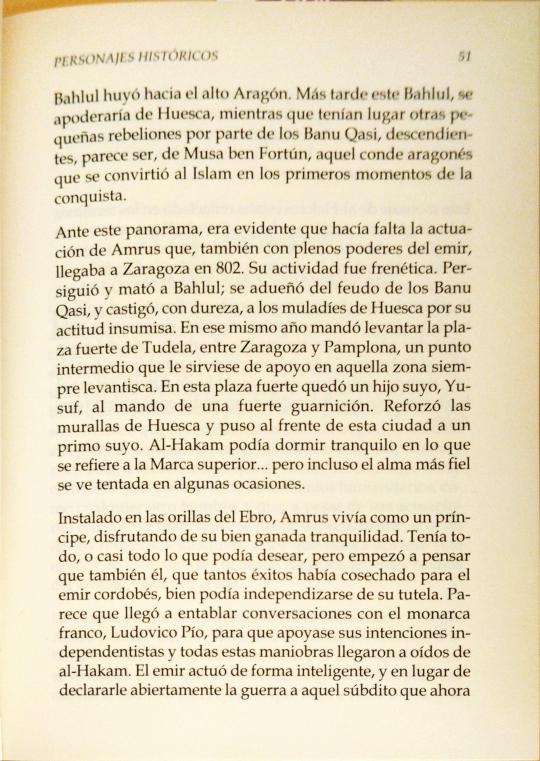
Bahlul fled towards upper Aragon. Later this Bahlul, would take over Huesca, while other small rebellions by the Banu Qasi took place, who were descendants, it seems, of Musa ben Fortún, that Aragonese count who converted to Islam in the first moments of the conquest.
Given this panorama, it was evident that the action of Amrus who, also with full powers of the emir, came to Zaragoza in 802. Its activity was frenetic. Persecuted and killed Bahlul; took over the fiefdom of the Banu Qasi, and harshly punished to the muladíes of Huesca for their rebellious attitude. In that same year he ordered the construction of the stronghold of Tudela, between Zaragoza and Pamplona, an intermediate point that would serve as support in that always upheaval area. In this stronghold there was his son, Yusuf, commanding a strong garrison. He reinforced the walls of Huesca and put one of his cousins in charge of this city. Al-Hakam could sleep peacefully when it came to the Upper March... but even the most faithful soul is tempted in some occasions.
Installed on the banks of the Ebro, Amrus lived like a prince, enjoying your well-earned peace of mind. He had everything, or almost everything he could want, but he began to think that he too, which had garnered so much success for the emir of Cordoba, could become independent of his tutelage. It seems that he came to engage conversations with the Frankish monarch, Louis the Pious, so that supported their independence intentions and all these maneuvers reached al-Hakam's ears. The emir acted intelligent, and instead of openly declaring war on that subject that now
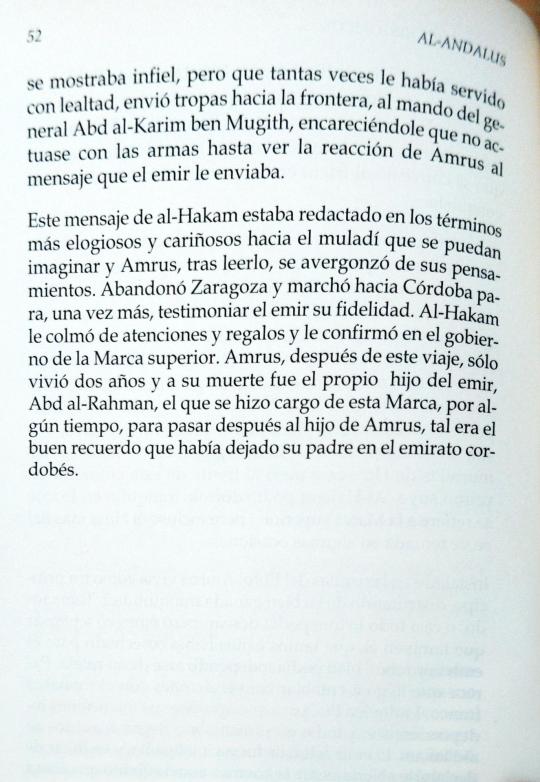
showed to be unfaithful, but that he had served him so many times with loyalty, he sent troops to the border, under the command of General Abd al-Karim ben Mugith, urging him not to act with the weapons until seeing Amrus's reaction to the message that the emir gave him.
This message from al-Hakam was written in the most praiseworthy and affectionate towards the muladí that you can imagine and Amrus, after reading it, was ashamed of his thoughts. He left Zaragoza and marched towards Córdoba to, once again, bear witness the emir his fidelity. Al-Hakam showered him with attention and gifts and confirmed him in the government of the Upper March. Amrus, after of this trip, he only lived two years and at his death the son of the emir, Abd al-Rahman, took charge of this March, for some time, to later pass to the son of Amrus, such was the good memory that his father had left in the emirate of Cordoba.
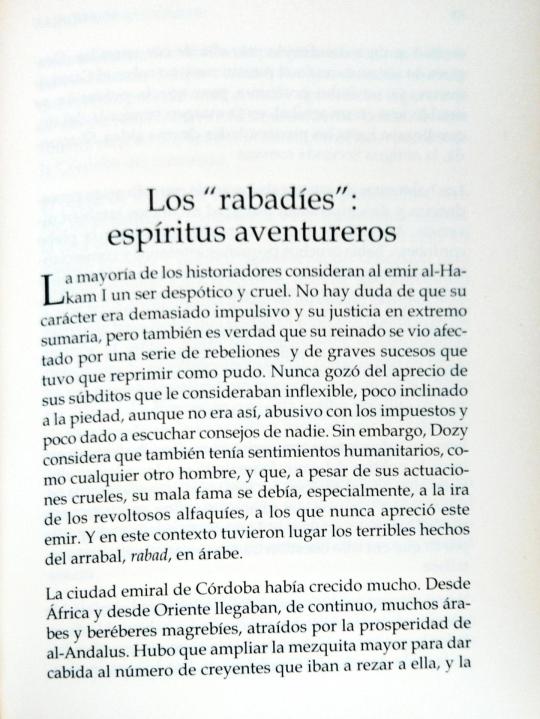
The "Rabadis": adventurous spirits
Most historians consider the emir al-Ha-kam I despotic and cruel. There is no doubt that his character was too impulsive and his justice extremely summary, but it is also true that his reign was affected by a series of rebellions and serious events that he had to repress as best he could. He never enjoyed the appreciation of his subjects who considered him inflexible, little inclined to piety, although it was not like that, abusive with taxes and little given to listening advice from no one. However, Dozy believes that he also had humanitarian feelings, like any other man, and that, despite of his cruel actions, his bad reputation was due, especially, to the wrath of the rebellious alfaquis, whom this emir never appreciated. And in this context, the terrible events of the suburb, rabad in Arabic, took place.
The emiral city of Córdoba had grown a lot. From Africa and from the East any Arabs and Berbers from the Maghreb continually arrived attracted by the prosperity of al-Andalus. The mosque had to be expanded larger to accommodate the number of believers who came to pray to it, and

The city was expanding beyond its walls. After the Roman bridge over the Guadalquivir was restored, there was no longer a problem for the population to settle in a suburb on the left bank of the river, which reached the vicinity from a village, Shaqunda, ancient Roman Secunda.
The inhabitants of this suburb were of very diverse origins and they carried out a multitude of diverse jobs. Besides of what could be considered the Cordoba plebs, there were many small Mullawad and Christian artisans and merchants, but due to its proximity to the main mosque and the emiral palace, many Cordobans who were employed, either in the mosque or in the palace, they settled there. Among this diverse population, also found the alfaquíes, religious leaders of the doctrine Malikí, who had reached a very prominent position and a very notable influence at court, especially with the emir Hisham, father of al-Hakam I.
This suburb will soon become a focus of discontent towards the emir's policy, promoted by the same alfaquies who with al-Hakam had neither the appreciation nor the influence that they achieved with his predecessor. On the other hand, in the city al-Hakam did not enjoy of many sympathies so it was only a matter of time before the situation exploded.
And it happened that one day a rumor spread through the city that seventy-two leading citizens had been executed and that their corpses were going to be exposed, crucified, on the right bank of the Guadalquivir. The mood be-
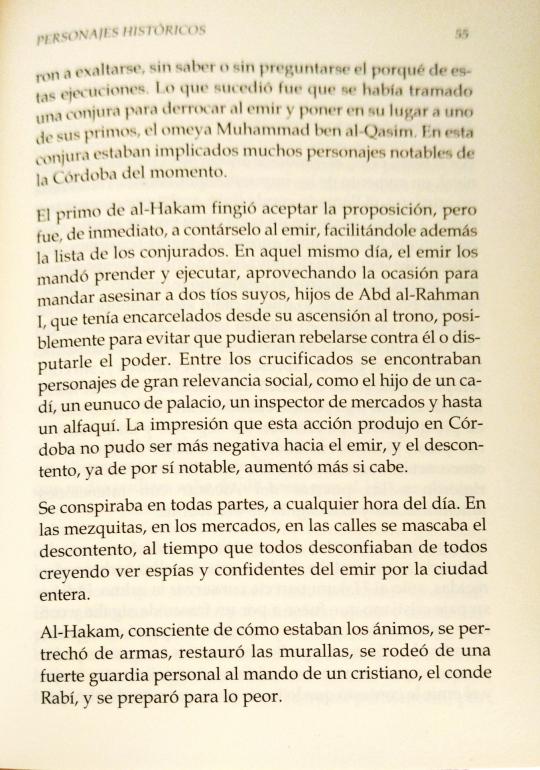
gan to exalt, without knowing or without asking themselves the reason for these executions. What happened was that a plot had been hatched to overthrow the emir and put in his place one of his cousins, the Umayyad Muhammad ben al-Qasim. Many notable people from the Córdoba of that time were involved in this conspiracy. Al-Hakam's cousin pretended to accept the proposal, but was immediately to tell the emir, also providing him with the list of the conspirators. Inthat same day, the emir ordered them to be arrested and executed, taking advantage of the occasion to order the murder of two of his uncles, sons of Abd al-Rahman I, who had been imprisoned since his ascension to the throne, possibly to prevent them from rebelling against him or challenging him for power. Between the crucified were figures of great social relevance, such as the son of a cadi, a palace eunuch, a market inspector and even a alfaqui. The impression that this action produced in Córdoba could not be more negative towards the emir, and the discontent, already notable, increased.
There was a plotting everywhere, at any time of the day. In the mosques, in the markets, in the streets discontent was chewed, while everyone distrusted everyone, believing they saw spies and confidants of the emir throughout the entire city.
Al-Hakam, aware of the mood, equipped himself withweapons, restored the walls, surrounded himself with a strong personal guard under the command of a Christian, Count Rabí, and prepared himself for the worst.
#book scans#al andalus. historical figures#al andalus. personajes históricos#al andalus#al andalus history#bookblr#historyblr#spanish history#sulayman ibn yaqzan ibn al-arabi#amrus ibn yusuf#rabadies#rabadi#al hakam i#al hakam i of córdoba#emirate of cordoba#umayyad emirate of córdoba#middle ages#rabadid dinasty#hisham i#hisham i of cordoba
9 notes
·
View notes